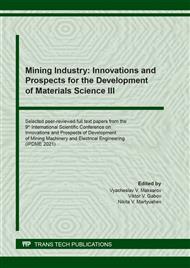p.41
p.48
p.54
p.60
p.70
p.76
p.87
p.94
p.101
Effect of Electrotransport on Concentration Distribution in Melts Formed by Contact Melting
Abstract:
Electric current has a significant effect on the transfer of matter in liquid layers that grow during contact melting. Depending on the direction of the current, both an increase and a decrease in the rate of contact melting can be observed. In this case, the growth of liquid interlayers does not obey the well-known parabolic law, in contrast to the usual (current-less) contact melting in a nonstationary diffusion mode and other diffusion processes. The paper considers the question of the influence of direct electric current on the concentration distribution in the melt formed during contact melting, as well as on the process of movement of interphase boundaries. A solution is obtained for the diffusion equation for a liquid layer growing in the process of contact melting in the presence of a constant electric current in the system. It is shown that the concentration distribution curves and their gradients for the two modes of the process under consideration (accelerating and decelerating) will have a rather different form, while the movement of the interphase boundaries occurs according to a complex law.
Info:
Periodical:
Pages:
70-75
Citation:
Online since:
February 2022
Authors:
Price:
Сopyright:
© 2022 Trans Tech Publications Ltd. All Rights Reserved
Share:
Citation:


